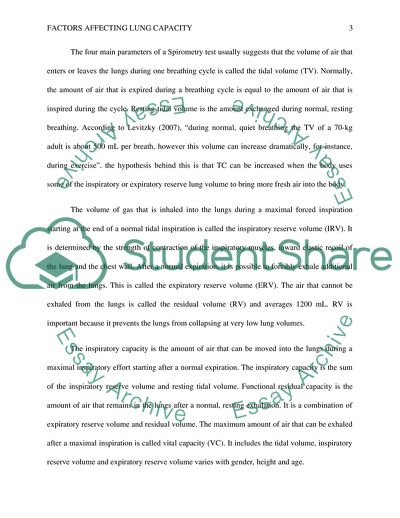Cite this document
(Factors Affecting Lung Capacity Statistics Project Example | Topics and Well Written Essays - 1750 words, n.d.)
Factors Affecting Lung Capacity Statistics Project Example | Topics and Well Written Essays - 1750 words. https://studentshare.org/health-sciences-medicine/1861586-factors-affecting-lung-capacity-in-terms-of-ageheight-and-physical-condition
Factors Affecting Lung Capacity Statistics Project Example | Topics and Well Written Essays - 1750 words. https://studentshare.org/health-sciences-medicine/1861586-factors-affecting-lung-capacity-in-terms-of-ageheight-and-physical-condition
(Factors Affecting Lung Capacity Statistics Project Example | Topics and Well Written Essays - 1750 Words)
Factors Affecting Lung Capacity Statistics Project Example | Topics and Well Written Essays - 1750 Words. https://studentshare.org/health-sciences-medicine/1861586-factors-affecting-lung-capacity-in-terms-of-ageheight-and-physical-condition.
Factors Affecting Lung Capacity Statistics Project Example | Topics and Well Written Essays - 1750 Words. https://studentshare.org/health-sciences-medicine/1861586-factors-affecting-lung-capacity-in-terms-of-ageheight-and-physical-condition.
“Factors Affecting Lung Capacity Statistics Project Example | Topics and Well Written Essays - 1750 Words”. https://studentshare.org/health-sciences-medicine/1861586-factors-affecting-lung-capacity-in-terms-of-ageheight-and-physical-condition.


